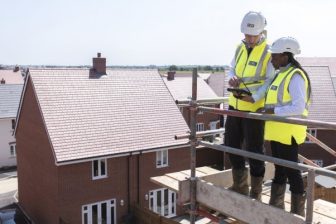 Countryside charity CPRE has identified brownfield sites that it says could support the development of more than 1.2 million homes.
Countryside charity CPRE has identified brownfield sites that it says could support the development of more than 1.2 million homes.
The countryside charity CPRE has looked at councils’ registers of brownfield land and found that over 1.2 million homes could be built on 23,000 sites covering more than 27,000 hectares of previously developed land.
In addition, it discovered that just 45% of available housing units have been granted planning consent and 550,000 homes with planning permission are still awaiting development.
Tom Fyans, the interim chief executive of CPRE, commented: “You know the system is broken when hundreds of thousands of vulnerable people and families are on social housing waiting lists, many in rural areas.
“Meanwhile, across the country, tens of thousands of hectares of prime brownfield sites are sitting there waiting to be redeveloped.”
Former industrial heartlands in the north of England were the worst areas for unused brownfield sites. The proportion of available housing units with planning permission is 33% in the North West, 36% in the West Midlands and 40% in Yorkshire and the Humber, the latter of which has enough brownfield sites to build 115,000 homes.
In the South West, where evidence suggests local people cannot afford to rent or buy, in a crisis worsened by a rise in second-home owners, there is capacity to build 71,000 homes on brownfield sites, 56% of which have planning permission.
Fyans said investing in brownfield regeneration would help significant boost new housing supply.
He added: “The only solution is a commitment to building hundreds of thousands of new homes available at social rents or sold at affordable prices linked to local wages. Investing in brownfield regeneration would have a transformative effect. Done with consideration, such developments breathe new life into communities while also building the homes local people actually need alongside existing infrastructure such as public transport, schools and shops.”


This article and report needs to clarify the ownership status of the land.
Specifically what portion is either owned, or under option by developers, and for how long.
Then, what portion has planning without any construction either taking place, or scheduled.
You must be logged in to like or dislike this comments.
Click to login
Don't have an account? Click here to register
Just about everybody would agree that a brownfield first policy is a good one to preserve our greenbelt. Trouble is the developers who do the actual building don’t want to build on brown field sites. Brownfield sites require remedial work before they can be built on. Old buildings have to be demolished and land de-contaminated this all costs money eating into profits. Brownfield sites tend to be smaller, so economies of scale do not come into force further eating into profits. They also don’t want to build less profitable affordable homes, why would they? Developers are a law unto themselves. Cutting housing targets is a face saving tactic for the Government as they have no way of forcing developers to build, unless they hand them large wads of cash – but I don’t see that happening anytime soon.
You must be logged in to like or dislike this comments.
Click to login
Don't have an account? Click here to register
I wouldn’t be so sure. H2B has funnelled huge amounts of cash directly to the housebuilders and that ends soon.
Im sure somehow, a method & replacement will be found to ensure this continues.
You must be logged in to like or dislike this comments.
Click to login
Don't have an account? Click here to register